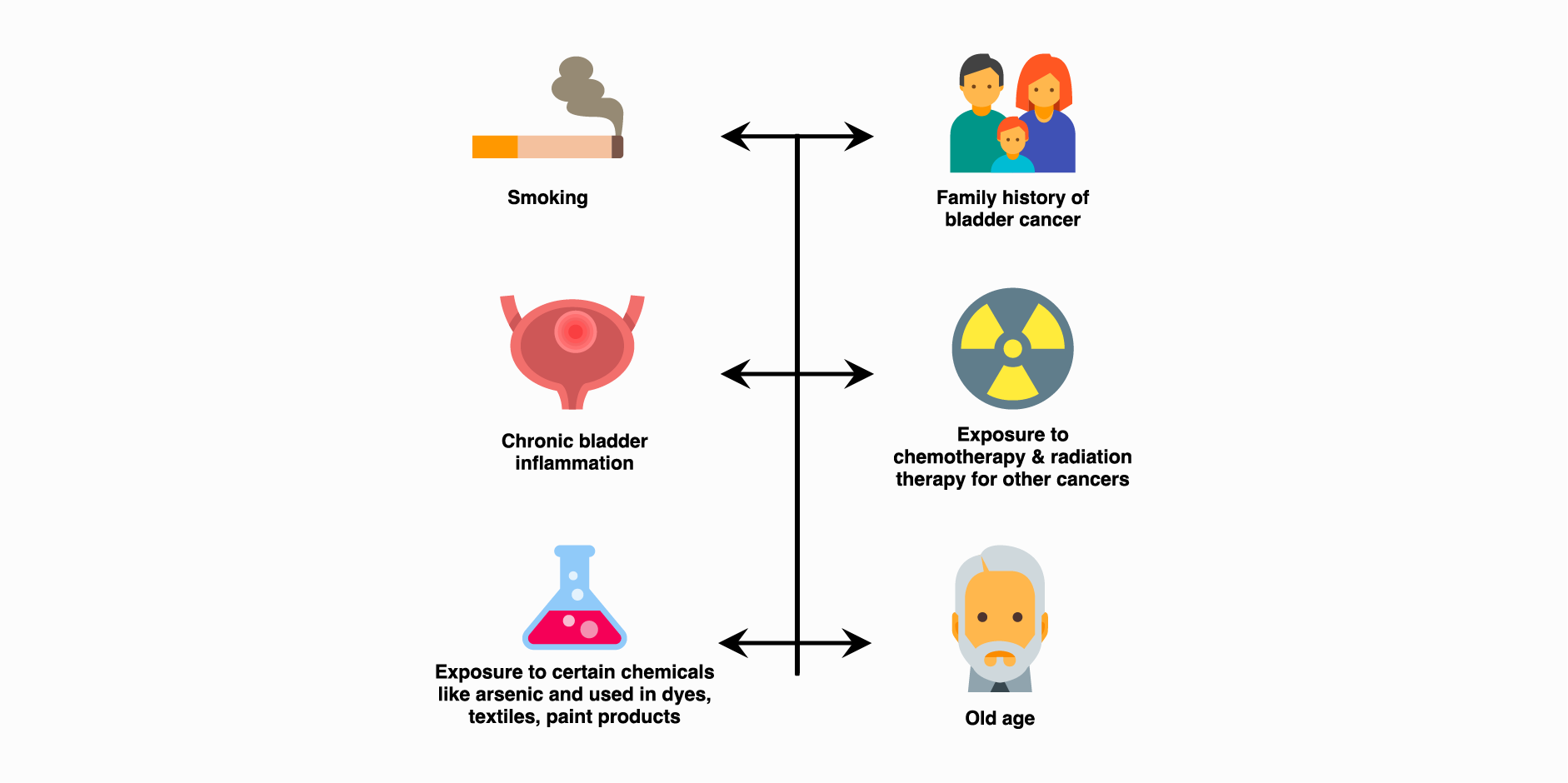Content on this page:
Content on this page:
Introduction
Bladder cancer is the uncontrollable growth of cancer cells in the hollow organ of the pelvis which is the bladder.
Epidemiology
Bladder cancer is the most common cancer involving the urinary system and is the tenth most common commonly diagnosed cancer in the world. It is the sixth most common cancer in the United States (US), the eleventh in the United Kingdom (UK), and the fourteenth in Asia, and it is the ninth most common cancer in men in Malaysia and the tenth most common cancer in men in Singapore. The predominant histologic type of bladder cancer is the urothelial (transitional cell) carcinoma. Less common histologic types include squamous cell carcinoma and adenocarcinoma. It is 3 to 4 times more prevalent in men than in women. Bladder cancer is the seventh most common cancer in men and the seventeenth most common cancer in women, but women present with more advanced disease and have worse survival.
Pathophysiology
The pathogenesis of bladder cancer is multifactorial and complex involving specific pathways that lead to uncontrolled cellular division. Currently, there are two pathogenic pathways to describe the development of the two types of bladder cancer, non-muscle invasive bladder cancer and muscle-invasive bladder cancer. In one of the pathogenic pathways, non-muscle invasive bladder cancer involves the slow cycling urothelium that leads to the formation of urothelial hyperplasia. In this case, cancer develops when the hyperplastic urothelium begins to grow towards malignancy. This pathway involves alterations in several genes including the fibroblast growth factor receptor 3 (FGFR3) and the Harvey rat sarcoma viral oncogene (HRAS). It is noted that mutations in FGFR3 are found in papillary Ta bladder cancer tumors, while HRAS mutations are present in as much as 30% of cases. While in the other pathogenic pathway, muscle invasive bladder cancer originates from carcinoma in situ (CIS) or high-grade papillary lesions or severe dysplasia. These tumors are often the result of inactivation of the TP53, RB1, or PTEN pathways.
Risk Factors
Active and passive tobacco smoking is the most important risk factor
for bladder cancer as tobacco smoke contains aromatic amines and polycyclic
aromatic hydrocarbons that are renally excreted. Occupational exposure to
aromatic amines, polycyclic aromatic hydrocarbons, and chlorinated hydrocarbons
is the second most important risk factor for bladder cancer. This occurs mainly
in industrial plants processing paint, dye, metal, and petroleum products.
Increasing age is also a risk factor, and the mean age of diagnosis is 73 years
old. Exposure to ionizing radiation is connected with increased risk. There is
an increased risk of developing bladder cancer in patients undergoing
external-beam radiotherapy, brachytherapy, or a combination. Bladder
schistosomiasis (Schistosoma haematobium) has a well-established
relationship with squamous cell carcinoma of the bladder. Genetic
predisposition has been shown to influence the incidence of bladder cancer
through its impact on the susceptibility to other risk factors. For example,
there is an increased risk of bladder cancer for first- and second-degree
relatives. Inherited mutations in carcinogen-detoxification genes such as
N-acetyltransferase 2 (NAT2) and glutathione S-transferase mu 1 (GSTM1)
are associated with susceptibility to bladder cancer.
 Bladder Cancer_Disease Background
Bladder Cancer_Disease BackgroundClassification
Bladder cancers are classified into non-muscle invasive bladder cancer and muscle invasive bladder cancer based on their invasiveness and cellular and even molecular characteristics. Non-muscle invasive bladder cancer is urothelial carcinoma that is confined to the mucosa and submucosa, not penetrating through the lamina propria. While muscle invasive bladder cancer penetrates the lamina propria and enters either the superficial or the deep muscle layers of the bladder, they may also extend to other surrounding tissues.
